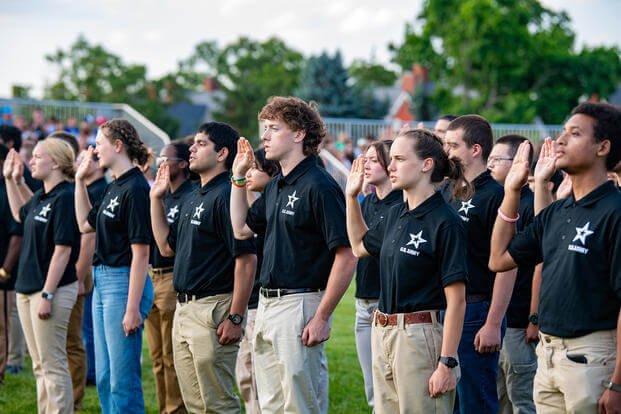The U.S. Army has announced that it has surpassed its recruitment goal for the year, reaching its target of 61,000 active-duty soldiers ahead of schedule. This achievement comes amid intensified efforts to attract a wider range of young Americans who traditionally have not qualified for enlistment, coupled with a potential economic downturn.
Both President Donald Trump and Defense Secretary Pete Hegseth have acknowledged this recruiting success as a testament to growing patriotism among young Americans. Army Secretary Dan Driscoll, in a Wall Street Journal op-ed, attributed the increase in enlistment to “a resurgence of pride in our country” and “a generation inspired by purpose and service.”
Achieving the recruitment target ahead of the fiscal year-end on September 30, 2025, is a notable turnaround for the Army and other military branches, which have faced challenges in meeting recruitment goals in recent years.
The Pentagon is now considering a rare increase in the Army’s end strength, which could involve using a seldom-invoked authority that enables the defense secretary to raise the Army’s size by up to 3% without needing congressional approval.
While the exact reasons for this recruitment boost remain unclear, several factors likely contribute to the trend. Historically, enlistment motivation has been tied to economic opportunities rather than the influence of any specific administration.
Despite the progress, the Army continues to face hurdles, such as a dwindling pool of eligible young Americans. The Pentagon estimates that less than one-quarter of individuals aged 17 to 24 can meet the requirements for enlistment, which include passing an entrance exam and meeting body weight standards.
Moreover, the introduction of Military Health System Genesis, a digital health record system, has increased the number of medical waivers needed due to its comprehensive access to applicants’ medical histories. This has led to a tripling of waivers from 5,300 in 2022 to nearly 15,000 in 2024.
Simultaneously, the Army has adjusted its standards regarding applicants with criminal histories, approving enlistments for more individuals with felony convictions, from 98 in 2022 to 401 in 2024. However, applicants with sexual offense convictions are still barred from service.
A significant contributor to the Army’s recruitment success is the Future Soldier Preparatory Courses, launched in 2022, which offer academic and fitness training for those who do not initially meet enlistment standards. To date, 10,465 troops have participated in these courses, which help prepare recruits for basic training.
Despite these efforts, the Army continues to lose about a quarter of new enlistees within the first two years, often due to health or disciplinary issues. Those who attend the preparatory courses have a slightly higher attrition rate of 25% compared to 20% for those who go directly to basic training.
The softening economy, marked by a 0.3% contraction in the U.S. economy during the first quarter and rising youth unemployment, may also be driving more young people to consider military service.
Among the recruits this year, 11,000 joined through the delayed-entry program, which allows high school seniors to commit to enlistment early and start training after graduation. This figure reflects a temporary increase due to training backlogs, prompting the Army to expand its basic training companies to accommodate the surge.
For the remainder of the fiscal year, any new recruits will enter the delayed-entry program and will be counted in the following year’s recruitment totals.
“`











